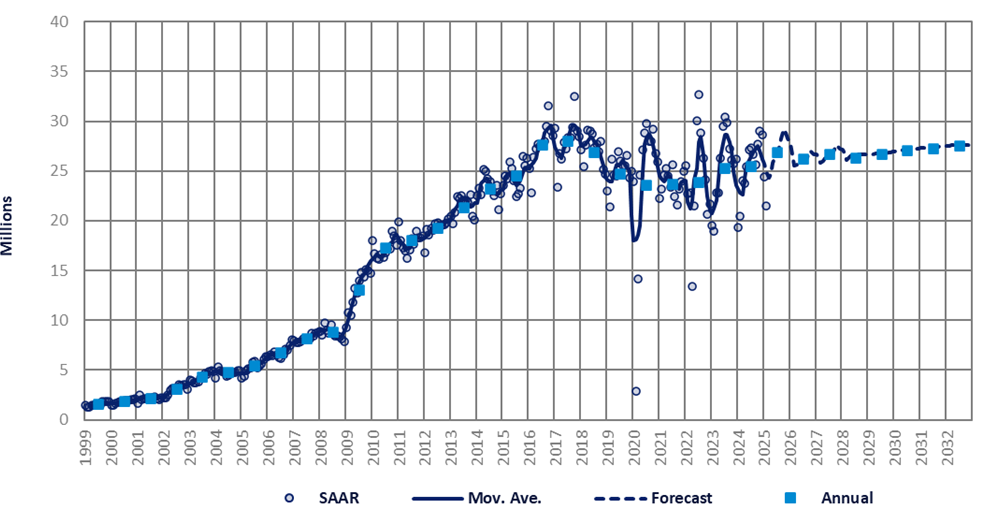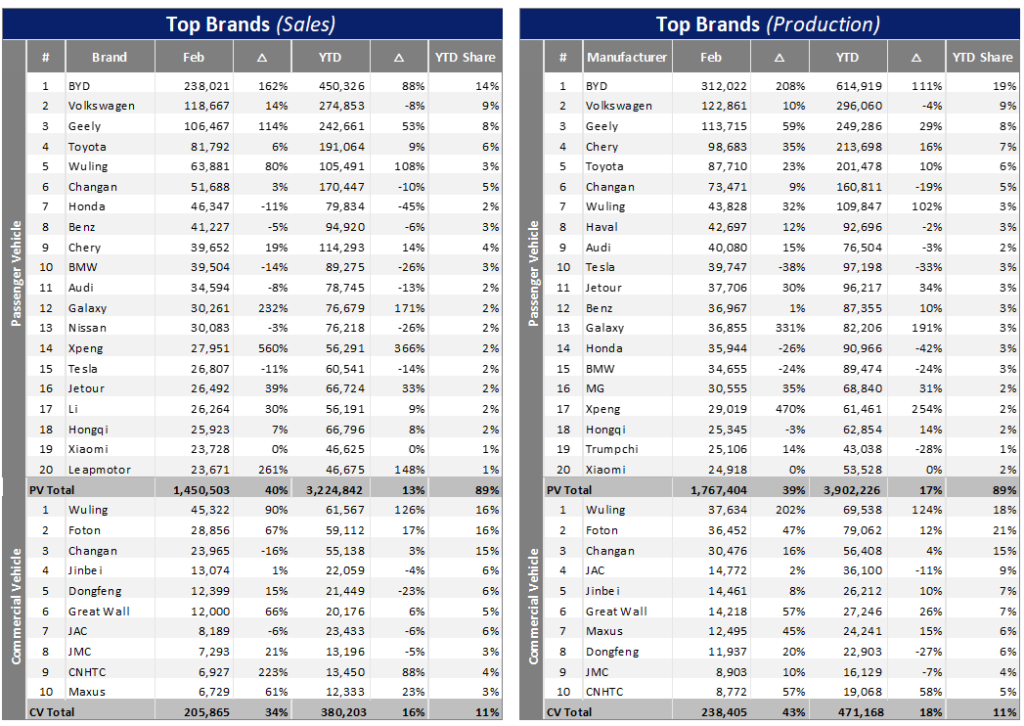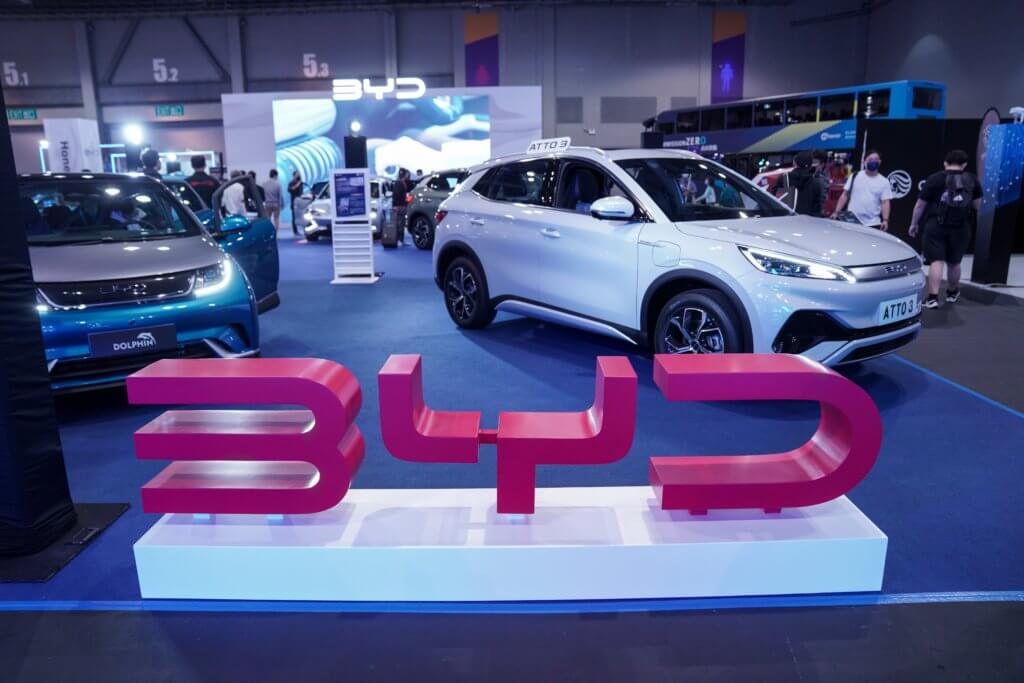In February 2025, China’s LV market showed steady growth. Despite the impact of the Spring Festival holiday, the market’s performance remained strong. In terms of LV sales, excluding exports, a total of 1.7 million units were sold during the month, marking a 39.2% YoY increase and a 15.0% MoM decline, attributable to the elevated sales base in the preceding month. When segmented by model type, PV sales accounted for the majority with 1.5 million units sold, which represented declines of 40.0% YoY and 18.3% MoM.

At the same time, LCV sales demonstrated a particularly positive trend, increasing by 33.8% YoY and 18.1% MoM. According to the data, the holiday-adjusted February selling rate was 21.5 million units/year, down by 12% from January. In YoY terms, however, sales (i.e., wholesales) expanded by 38% in February and 13% YTD, due to distortions caused by the timing of the Lunar New Year holiday.

After the Spring Festival in February, the production and operation activities of OEMs accelerated, while new product launches and promotions were carried out in quick succession, and the market’s vitality was significantly improved. As such, LV production and sales during the month increased rapidly compared to the same period in 2024. From January to February 2025, a new round of old-for-new policies expanded in scope and were implemented early, while technology upgrades and product renewals of automakers stimulated demand, causing overall LV production and sales to grow steadily. These trends included the continued robust performance of Passenger Cars, the rebounding of the CV market, the strong performance of NEVs, and the continued rapid growth in production and sales. This laid the foundation for a solid start in the first quarter. The timing of the trade-in policy is appropriate as China’s auto market shifts from emerging to mature, with consumers transitioning from new purchases to replacements and additional purchases. This policy boosts demand by offering subsidies for trade-ins, which is especially beneficial for consumers that are considering upgrading to NEVs or higher-quality vehicles.
With the gradual launch of the scrapping and replacement policies in 2025, and the active stabilization of price expectations by automakers, the overall price war in the auto market has been milder than in previous years. In addition, recent changes in the domestic and international macroeconomic environment have been better than expected, and consumers’ consumption mentality has been relatively stable. Furthermore, the continued efforts of automakers’ marketing activities during the Spring Festival and the low sales base in February 2024 contributed to a stronger February this year.
In February 2025, production volumes were almost in line with our forecast. Affected by multiple factors such as the pace of output recovery after the Spring Festival holiday, the stability of the industrial supply chain and the speed of market demand release, the production growth momentum was stable during the month. Due to the old-for-new subsidy policy and the start of the new year, increasing numbers of consumers are looking to replace their old vehicles to take advantage of the considerable subsidy on offer.
In February, total LV production reached 2.0 million units, marking a significant YoY increase of 39.5%. By model type, the PV segment was the main growth driver, with output totaling 1.8 million units and representing a YoY expansion of 39.1%. Meanwhile, the CV industry improved further, with production rising by 42.5% YoY to 238k units. The overall market continued the differentiation trend observed in the previous year. Chinese OEMs produced a total of 1.4 million units, achieving a YoY growth of 63.4%. At the same time, JV OEMs also enjoyed growth, albeit to a lesser extent, at 1.8% YoY. The production cuts by JV automakers have somewhat limited the overall output growth in the Chinese market. This shift highlights the transformation occurring in the country, where local automakers are advancing, while JV brands need to reassess their strategies to maintain competitiveness. In terms of exports, 414k units were shipped from China, representing a 15.3% YoY increase but a 5.8% MoM decrease. The PV segment drove this growth with 369k units exported, marking a 14.4% YoY rise. At the same time, the CV segment exported 45k units and registered a 22.6% YoY increase.
Although the monthly export volume declined compared to the previous month, it still maintained an upward trajectory on a YoY basis. This growth trend, even considering the impact of the Spring Festival on LV production and sales, fully demonstrates the strong competitiveness and demand of Chinese LVs in the global market. The export performance of Chinese-branded vehicles is still eye-catching, and brands such as BYD and Chery rank among the top OEMs in terms of total shipments. This shows that local brands have made significant progress in product quality, technological innovation and brand building, and have gradually won the recognition and trust of the international market.

US Tariffs are shifting - will you react or anticipate?
Don’t let policy changes catch you off guard. Stay proactive with real-time data and expert analysis.
By GlobalData

This article was first published on GlobalData’s dedicated research platform, the Automotive Intelligence Center.




